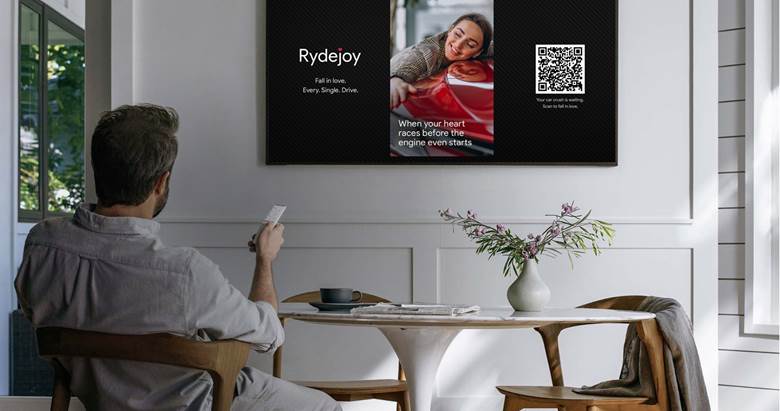FiOS: Telco Rolls Dice on the Big Pipe
FiOS, Verizon's new fiber-to-the-home network, is where Internet rubber meets the television road. Its success--or failure--stands to have huge implications for the direction of American communications throughout the remainder of this decade.
Ivan Seidenberg, chairman and CEO of Verizon, came to NAB2005 with one of those sugar-coated "invitations" that no doubt left many broadcasters shaking their heads and wondering "what next?" The telco mogul's pitch was one part carrot and one part stick.
First, the stick: There's a new sheriff in town and we're plowing ahead with or without you.
"FiOS will change the competitive landscape in the video marketplace, both now and in the future," Seidenberg told broadcasters in a keynote. "From day one, we'll offer a new technology, a new business model and a new customer experience."
Now that we have your undivided attention, the carrot: Broadcasters are Verizon's "natural partners" in exploring new digital technologies.
"As technology barriers fall, and we begin to marry the power of broadcasting with the mobility of wireless and the interactivity of the Internet, we'll offer a compelling customer experience that will give you many new ways to reinforce just how important you are in the lives of your audience."
Whatever Seidenberg meant by that, many broadcasters thought it sounded a lot like new competition. As quick as you can say "lobbyist," the NAB had a member on Capitol Hill warning of the grave dangers of a big interactive digital pipe to broadcasters.
"Stations would lose audience share and advertising dollars, and these dollars fund local programming that makes broadcasting valuable," Greg Schmidt, vice president of new development for LIN TV, who testified on behalf of the NAB at a House hearing.
He then proposed a laundry list of restrictions that Congress should impose on the telcos: Local broadcasters must remain the only source for network programming; fiber providers must be required to "black out" the availability of certain sports games; and local TV broadcasts must be carried on fiber networks.
One can only imagine the reaction to that list by network visionaries such as Robert Wright, the NBC chief who just made a deal with Verizon to put the NBC broadcast and cable networks on FiOS. In the meantime, Verizon is not in a mood to debate broadcasters over its own lightning-fast DTV transition. The telco is not only rapidly signing up premium program services for FiOS, but is also busy building--house-by-house--one of the most expensive and advanced communications network ever deployed in the United States.
FIBER COMES HOME
Although fiber-optic technology is common for long-distance and intercity communications throughout the telecommunications industry, Verizon is one of the first major telecoms to begin using it to directly connect homes and businesses to the network on a widespread scale.
The all-fiber network has long been considered the holy grail of interactive communications. Fiber has sufficient bandwidth for high-speed Internet access, telephone service and a wide array of video services--including HDTV. Though the television offerings are scant at this early stage, current customers can already acquire Internet service at speeds of 30 Mbps downstream and 5 Mbps upstream.
To help build the network across the country, Verizon will hire between 3,000 and 5,000 new employees by the end of this year. In South Plainfield, N.J., the telco is training about 160 new fiber installers each month. Jeffrey Batiste, a 10-year veteran trainer of the new generation of fiber installers, told the Associated Press:
"You have to compare this to other major milestones within the industry. This is as significant as when they began stringing wires across the country or bringing a telephone into every home."
HIGH-TECH PIONEERING
In a recent report by NorthJersey.com, Verizon's FiOS fiber installation process was described as a cross between high-tech pioneering and low-tech grunt work.
Take the recent FiOS installation at the home of Brendan O'Reilly in Harrington Park, N.J. According to NorthJersey.com, a technician plugged into the neighborhood's fiber network and strung the line to the side of the O'Reilly house, where he attached a new box called an Optical Network Terminal (ONT). Three types of wires come out of the ONT: one for phone, one for Internet and a third for future TV services.
A smaller box with a backup battery was installed inside a laundry room. This box, which needs to be plugged into an electrical outlet, keeps the backup battery charged and provides the low-level current needed to run O'Reilly's telephones for eight to 10 hours. The battery has an expected life of about two years and O'Reilly is responsible for replacing it.
After a few minor glitches, the O'Reilly installation--including a wireless home network--was complete in about four hours. However, O'Reilly, a soft-spoken area police officer, installed FiOS mainly for its high-speed Internet connection. For now, at least, he plans to keep his current Cablevision service for television viewing.
Like most customers, O'Reilly wants to see how well Verizon performs as a program provider, especially in the area of sports coverage, before he shuts down cable and depends on the FiOS network for all of his TV.
That, in a nutshell, is Verizon's real FiOS challenge. Since day one--no matter how good the technical attributes of a network--television has been driven by one thing: the quality of the programming. That hasn't changed and never will.
Get the TV Tech Newsletter
The professional video industry's #1 source for news, trends and product and tech information. Sign up below.
Frank Beacham is an independent writer based in New York.

